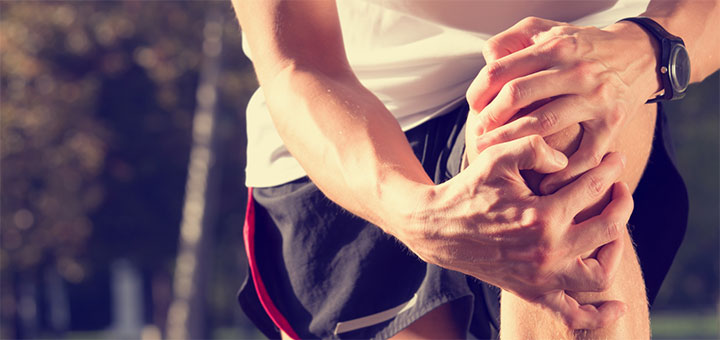Your knees are one of the most complex joints in the body…and one of the most injury prone.
You probably don’t give them a second thought until there is a problem and you experience knee pain. The knee joint it quite exposed: it consists of two rounded knobs of bone sitting on a fairly flat end of shin bone with a small rounded kneecap in the groove between the two knobs. Your standard ball and socket joint it is not!
As you bend and straighten your knee, the kneecap slides up and down in the groove between the two knobs – acting a bit like a pulley. Tendons and ligaments hold everything in place. Okay, end of the anatomy lesson as (unlike me) you probably aren’t that interested in how the knee works and are more concerned about when it stops working as it should.
Knee pain can be particularly frustrating because it causes an imbalance throughout the whole body which means you put more weight on one side than the other. In some cases the problem isn’t with the knee joint itself but is caused by the lower back, hip or pelvis placing excess stress on the knee or even by muscle or nerve problems higher up the body (see my article on the mystery of referred pain). Much of the time, knee pain is due to overuse injuries or trauma of some kind (an awkward slip) but two other common knee problems are due to patellofemoral syndrome and osteoarthritis.
Patellofemoral pain can be caused by damage to the inside of the kneecap. You are likely to feel pain inside or around the kneecap and this pain will be aggravated by sitting, squatting, running or using stairs. Custom made shoe inserts, special taping of the knee and a supervised exercise programme can all help tackle this painful condition.
Osteoarthritis is harder to treat and the best course of action is to use your knees properly in order to reduce the amount of wear and tear on them (see my advice below). That said, a chiropractic adjustment as administered by a suitably qualified individual goes a long way to reducing the pain and stiffness of osteoarthritis, improving the range of motion of the joint and in preventing the condition from worsening.
How to look after your knees:
Maintain a healthy weight: each step you take you take places a force on your knees equal to one and a half times your body weight. When you run, the force is 5 times your body weight!
Get your feet examined: many knee problems are caused by you rolling your feet inwards or outwards as you walk. I recommend many of my clients that compete in high level sporting activities to only purchase shoes that have been specifically chosen for their style of running and activity. Specific orthotics are also often recommended and we can either use a generic one, which is appropriate for around 85% of cases or we can refer you to a specialist foot biomechanist.
Wear the right shoes: opt for low heels (certainly nothing higher than 1 inch). Invest in appropriate sports shoes and get them fitted to you. Replace sports shoes every six months.
Get aligned: Stand with your ankles touching in front of a full length mirror. If you are correctly aligned both your knees and ankles should touch. If one or the other set aren’t touching, you should seek an appropriately trained sports specific health care practitioner to help tackle this.
Be kind to your knees: use a kneeling pad, don’t lock your knees but keep them soft when lifting heavy weights, and if you have knee problems avoid squatting exercises (unless under supervision).
Don’t ignore pain: never continue exercising if your knee is painful. Pain is a warning sign that something is wrong and ignoring it can cause further damage. Follow the RICE advice: Rest, Ice, Compression and Elevation. Rest the leg, apply an icepack wrapped in a tea towel (20 minutes on, 20 minutes off) and elevate the leg. Use an elastic bandage to reduce the swelling. Don’t use
heat as this encourages rather than reduces inflammation. See your local chiropractor.
Warm up; cool down: learn how to safely stretch to warm up and cool down before and following exercise. When beginning a new exercise routine, build up your repetitions slowly over a number of weeks.

